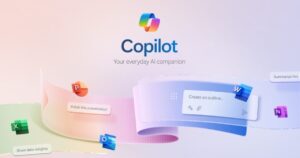Unwanted Appearance of Microsoft Copilot

Issues with Microsoft’s Copilot AI
Microsoft’s Copilot AI service has become a topic of concern for many users who report that it sometimes reactivates on its own after being disabled. This behavior has led users to describe the AI feature as behaving like a "zombie" that keeps coming back to life, raising significant questions regarding user control and privacy.
User Reports
A notable bug report was filed on Microsoft’s Visual Studio Code (VS Code) platform by a developer known as rektbuildr. They revealed that GitHub Copilot unexpectedly enabled itself across multiple workspaces, disregarding user commands to keep it disabled. The developer expressed frustration as they work with sensitive client repositories, stating, “I enable Copilot for specific windows, because not all my repos are public.”
This situation escalated when they found that, despite their attempts to disable Copilot, it activated for all their VS Code windows without consent. The developer highlighted a grave concern regarding confidentiality, claiming the Copilot might have access to critical files such as keys and certificates.
Microsoft’s Response
As word of these problems spread, Microsoft assigned a developer to investigate the issue. However, the company has not released an official statement addressing the growing concerns from users.
Users have further pointed out that a Reddit post illustrated a similar occurrence: Windows Copilot re-enabling itself even after being disabled via Group Policy Object (GPO) settings. This raises concerns about the reliability of user settings and the overall management of the Copilot feature on Windows 11.
Changes in Copilot Management
User kyote42 contributed to the Reddit discussion, observing that updates in Windows’ Copilot implementation may have affected how the GPO setting works. They mentioned that the existing methods to disable the feature might no longer be applicable. According to Microsoft documentation, effectively uninstalling or preventing the installation of Windows Copilot now requires using PowerShell and additional configurations via AppLocker.
This shift complicates the process and may come as a surprise to users who previously relied on simpler methods to manage their settings.
The Wider Context of AI Control
The issue of unwanted AI activation is not limited to Microsoft. Similar experiences have been reported across different tech platforms:
- Apple’s AI Services: With the release of iOS 18.3.2, users found that Apple’s AI suite re-enabled itself after previously being turned off.
- Google: The search engine has enforced AI-based features, offering less choice to users who prefer a traditional search experience without AI.
- Meta (formerly Facebook): Its AI functionalities in services like Instagram and WhatsApp have been difficult to disable completely, sparking debates over user control.
- Mozilla: The approach taken by Mozilla in incorporating an AI chatbot sidebar offers users the choice to activate the feature, contrasting with other companies that impose AI settings.
Contrastingly, DuckDuckGo maintains a user-centric approach by providing a subdomain for those who wish to avoid AI components altogether.
Growing AI Presence
As AI technology continues to expand in various applications, many users feel overwhelmed by the lack of control over these features. The substantial investments that tech giants have made into AI may contribute to its pervasive integration, but it raises critical considerations about privacy and user autonomy in the digital landscape.
It’s essential for users to be vigilant and proactive when setting their preferences for AI services, especially when companies continue to evolve their software. The complexities surrounding features like Copilot demonstrate the ongoing challenges in retaining user control over technology as AI becomes more intertwined with everyday applications.






